Not many people recognize the name Madame Gres, but she was a phenomenal designer in the 1930s to her last creation commissioned for Hubert de Givenchy in 1989 in Paris. With her elegant draping of silk jersey, unique approach to bias cut and her exquisite pleating details, she was a minimalist before the term was even invented. Looking at her works up close, it was easy to see why they belonged at home with sculptor Antoine Bourdelle's massive stone and marble sculptures --- the way that she shapes and drapes the cloth is just as though it was a stiff fabric. The evening dresses made from this fabric all appear extremely minimalistic, unlike haute couture such as that of Valentino's or other coutouriers that have a lot of detailed embriodery and embellishments in their creations.
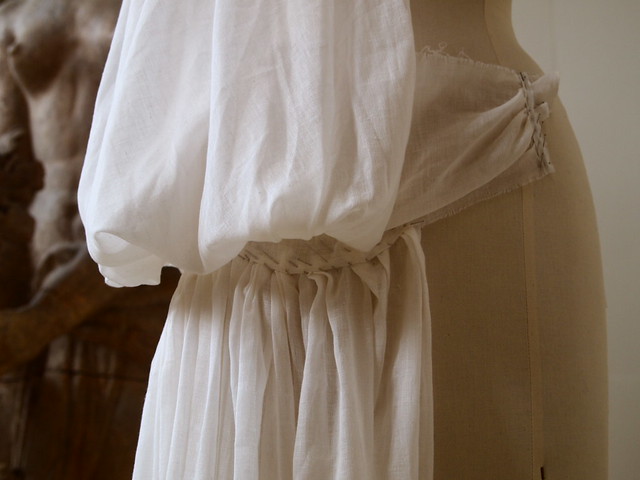 |
| Toile on a mannequin, 1980 |
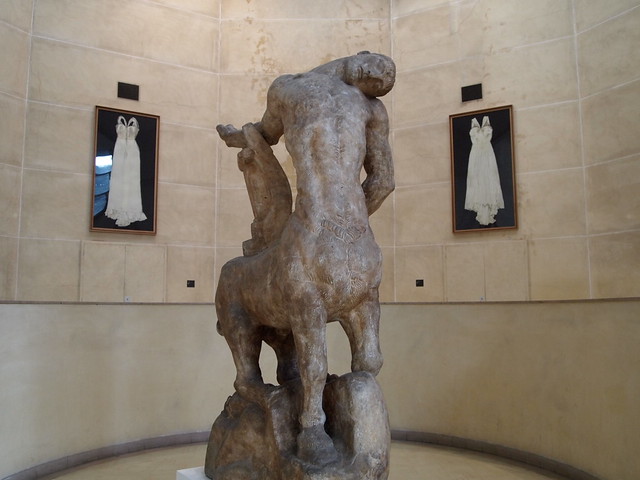 |
| 2 of her works with Bourdelle's famous sculpture, The Dying Centaur |
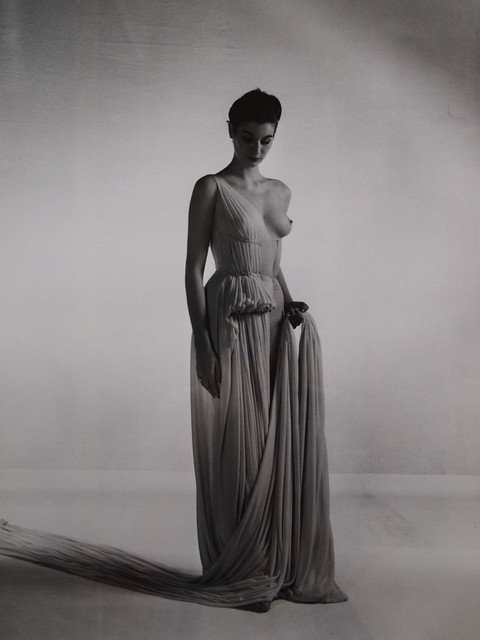 |
| Unfinished dress on a model, taken by Willy Mayward |
 |
| Red taffeta gown, Automne Hiver 1974 - 1945 |
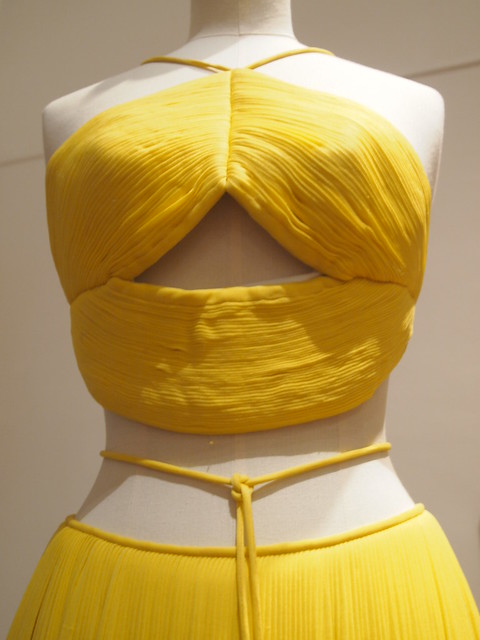 |
| All pleated details using continuous cloth featuring cutouts |
But yet a closer look at the details reveals that Mme Gres' works are no less interesting as the dress fits so well in the female body that you can imagine them as Grecian sculptures. In an era when women were still restricted by corsets, Mme Gres respected the female body and never featured corsets, and worked frequently with comfortable fabrics such as silk jersey, taffeta and organza, and never utilized interior reinforcements to create volume, unlike Christian Dior's post-war New Look designs.
Her evening looks also frequently featured cutouts at erogenous zones, making them extremely sensual and also modern.
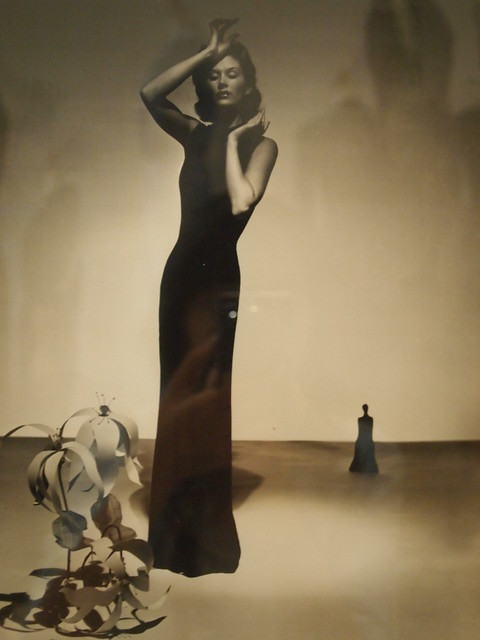 |
| Her works featured in Vogue, 1938 |
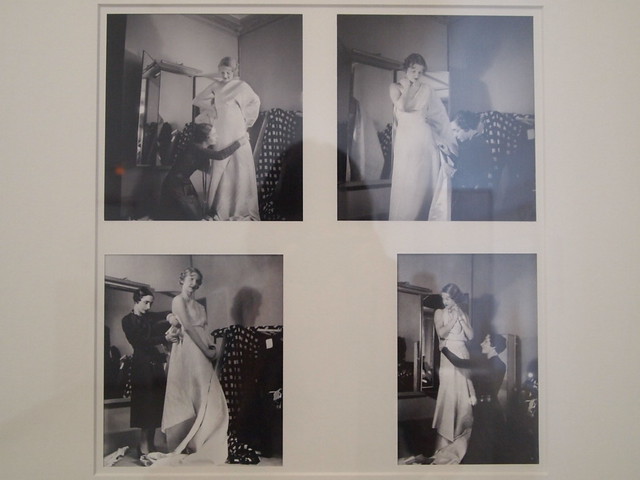 |
Mme Gres at work for a dress for Macy's Paris, 1938
Directly pinning the fabric onto a model |
Mme Gres also resisted against cutting her fabric; she almost never bothered with making toiles, but prefered to work by cutting straight into the fabric and pinning it directly onto the models based on her sketches. She frequently used some 20-30m of fabric on just one dress alone, making her designs hard to create during the wartorn era of 1942-1945.
 |
| Day Looks 1942-1960 |
Some of her day looks are, on the other hand, rather concealing. She incorporates stiffer fabrics such as wool and taffeta to create volume. I found that she often cuts the sleeves of her designs backwards so that when worn, the arms bring the sleeves forward to create a pocket of volume at the chest area, giving the impression of a full bust. One of her last creations on display was a design given to Hubert de Givenchy to thank him for his support. Using a bold orange and red floral print, the ballooning back and straight silhouette looked like it could have been designed by Rei Kawakubo.
Altogether I felt that it was a good retrospective into her works - it brought out her unique take on fabric and design by having her works shown in the original home of stone sculptor Antoine Bourdelle, as she envisioned herself to be a sculptor of fabric rather than a fashion designer. You can see more of the photos that I took
here, which includes more closeups as well as her sketches.











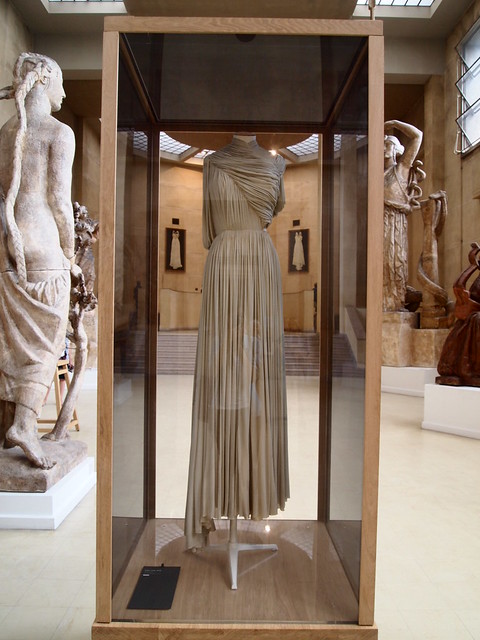
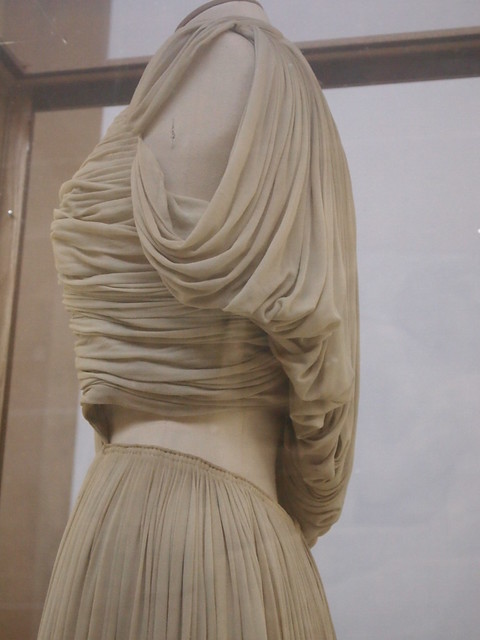

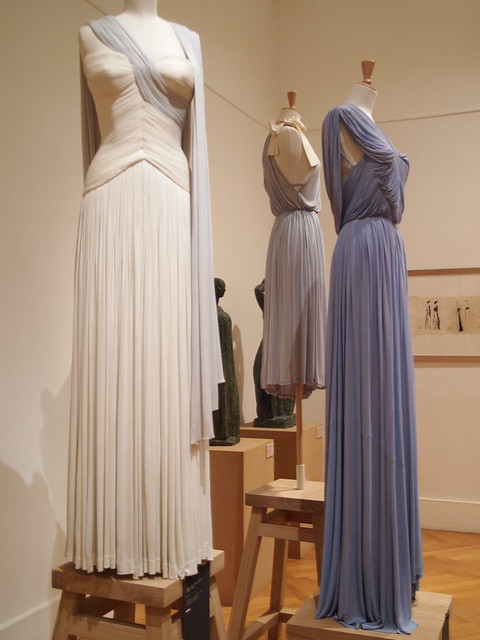
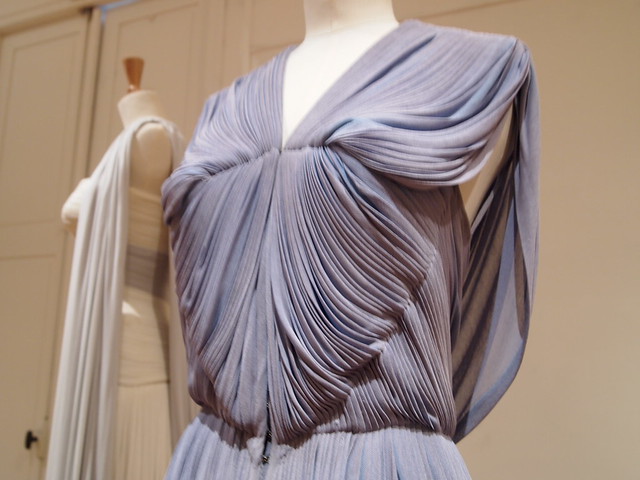
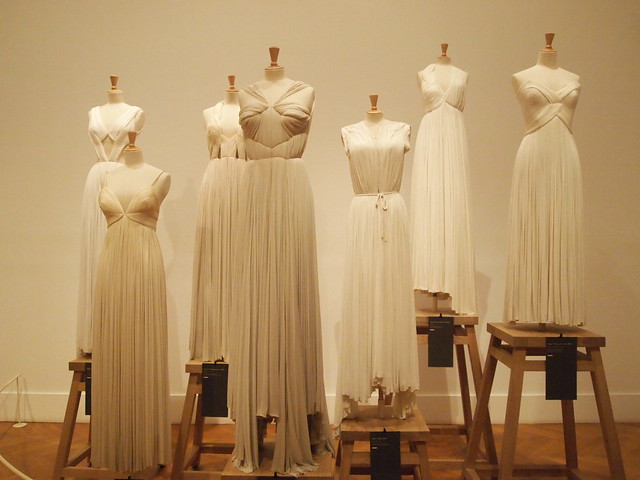

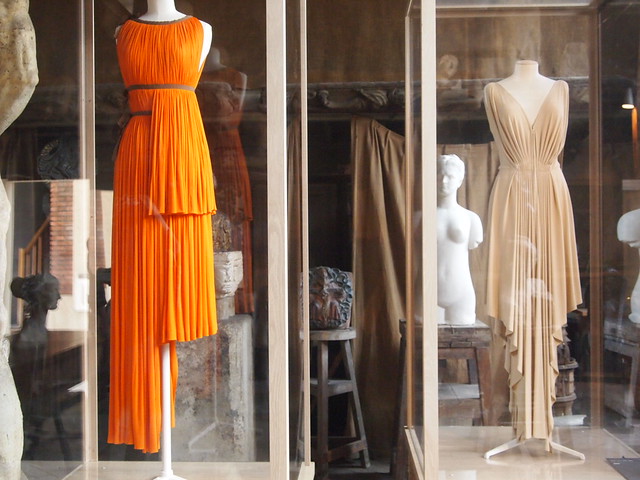
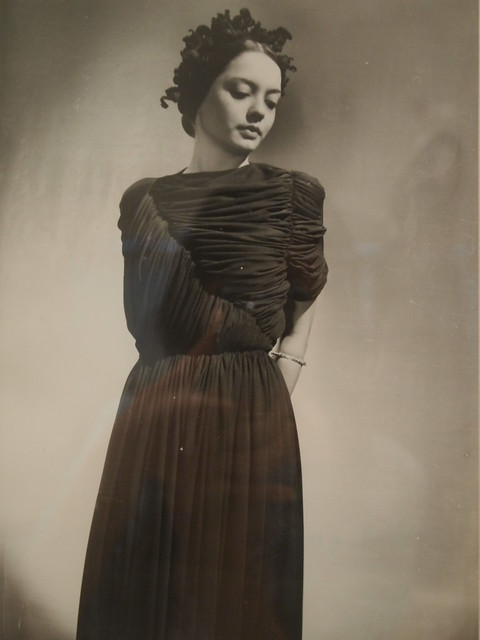
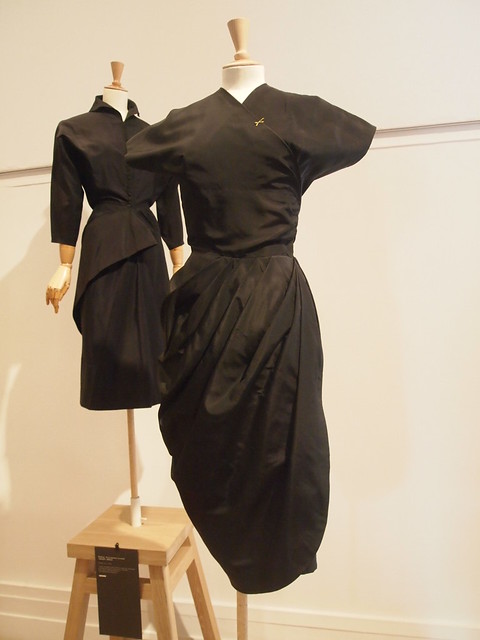


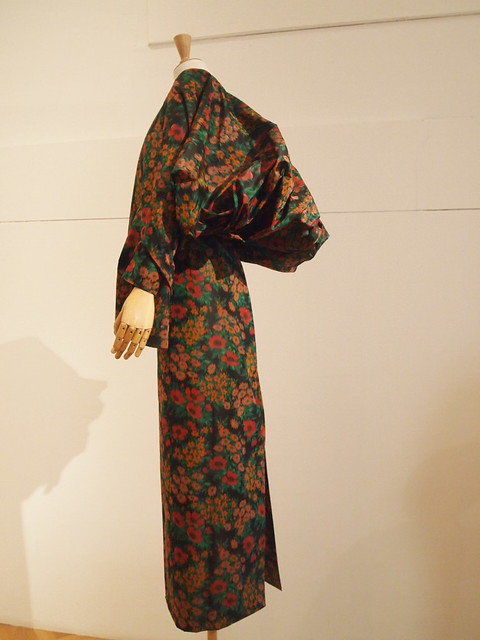
Heya¡my very first comment on your site. ,I have been reading your blog for a while and thought I would completely pop in and drop a friendly note. . It is great stuff indeed. I also wanted to ask..is there a way to subscribe to your site via email?
ReplyDeleteHi! Thank you for your lovely comment and for following my blog all this while! I really appreciate it.
ReplyDeleteYes you can subscribe to my blog via rss google reader or just key in your email at the right sidebar :)